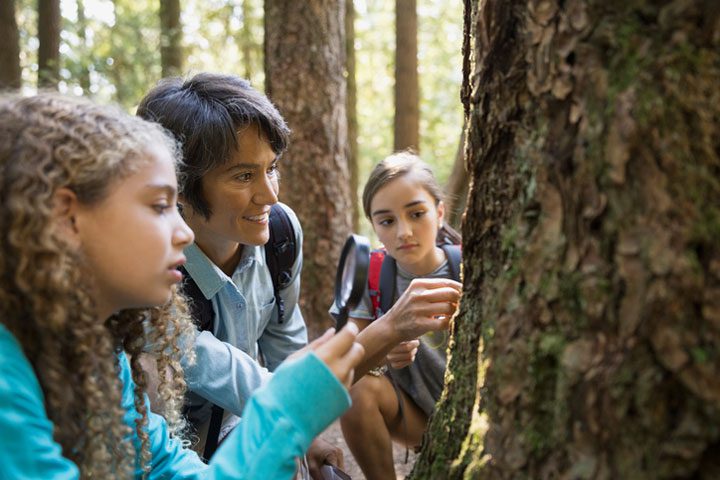Why Do We Need to Teach Science in Elementary School?

Why It Matters To You
- Teachers should support extended 3D investigations in elementary education for all students (e.g., by not allowing students to be pulled out during science). Keep images of science broad.
- District Staff & PD Providers should support elementary teachers in teaching science and school-building administrators in supporting science instruction.
- School Leaders should resource and support teams of elementary teachers by giving them ample time and materials to teach science.
What Is The Issue?
Our future depends on a public that can use science for personal decision-making and to participate in civic, political, and cultural discussions related to science. Though we have national goals for science education, science is often pushed to the side—particularly at the elementary school level. There are multiple reasons for science to be a core part of elementary school learning. It can support: (a) development of a knowledgeable citizenry, (b) meaningful learning of language and mathematics, (c) wonderment about how the natural world works, and (d) preparation for STEM-related careers.
Authors:
JULIE CAFARELLA, AMBER MCCULLOCH & PHILIP BELL - JANUARY 2017
Reflection Questions
- Do you view ELA and math instructional time to be at odds with the teaching of science? Have you considered integrating ELA and math into science investigations?
- On average, how many science instructional minutes do your students receive each week? 300? 150? 30? Fewer? What factors shape that quantity?
- What concrete steps need to happen in order for you to improve your science teaching?
Things To Consider
- Scientific literacy starts in early childhood and continues through elementary school. Scientific knowledge is necessary to fully participate in human culture and democracy—especially as it becomes more technological. The future of our nation depends on a scientifically literate public.The new vision for science education emphasizes the need for consistent science instruction throughout a student’s academic career. Scientific literacy is a developmental process that takes years of concerted effort to cultivate.
- Science learning takes significant time—but that time is not being provided. A recent study shows that science instructional time is decreasing in elementary school. Only 20% of K-3 students and 35% of students in grades 4-6 have access to daily science instruction. (See this report on teachers’ practices around science instruction).
- Students are ready to reason about science in early childhood. Children enter elementary school with reasoning skills and perceptions of the natural world that provide a sound basis for science learning. A recent report calls for greater attention to monitoring instructional time in elementary science. Multidisciplinary, long-term science projects are often easier to do with students in elementary school years. Elementary science can promote narrow views of how science works. Efforts should be made to broaden what counts as science and engineering.
Attending to Equity
- Start science instruction early. Participation in quality science instruction from a young age helps students develop favorable attitudes towards science. To make science accessible to “all” start with 3D science investigations in preschool and continue with them through elementary school and beyond.
- Focus instruction on personal and cultural relevance. Build on the interests, experiences, and desired futures of learners and their communities. This heightens the relevance of science.
- Leverage students’ existing design knowledge. Many elementary school children have engineering design-related hobbies that can be leveraged as they learn science. Engineering design is a great entry-point for many students.
Recommended Actions You Can Take
- Engage in cross-subject integration. There are significant overlaps between the new vision for K-12 science education and the approach taken with the Common Core State Standards (CCSS) in Math and ELA. Importantly, the practices within NGSS and CCSS overlap heavily, allowing for an unprecedented degree of cross-subject teacher learning and sharing. Reading, writing, and mathematical analysis should be substantial portions of science investigations.
- Leverage and cultivate student’s wonder about the natural world. Students in elementary school are deeply interested in science, and rate it higher than any other subject. Leverage that interest to cultivate a sense of curiosity and wonderment about how things work as students engage in science investigations.
- Help students see how contemporary science relates to careers and endeavors in the world. Students identify with science when they see how it can be used to improve conditions in the world. Go on fieldtrips to view ‘science in action.’ Explore video documentaries. Bring in STEM experts. This can support the development of student’s scientific literacy and progress towards STEM-related careers.
ALSO SEE STEM TEACHING TOOLS
- #4 Multiple Instructional Models
- #20 Outdoor Play & Investigations
- #21 What principals should know?
- #32 Why focus on practices?
STEM Teaching Tools content copyright 2014-22 UW Institute for Science + Math Education. All rights reserved.
This site is primarily funded by the National Science Foundation (NSF) through Award #1920249 (previously through Awards #1238253 and #1854059). Opinions expressed are not those of any funding agency.
Work is licensed under a Creative Commons Attribution-ShareAlike 4.0 Unported License. Others may adapt with attribution. Funded by the National Science Foundation (NSF). Opinions expressed are not those of any funding agency.


 Email Feedback
Email Feedback


